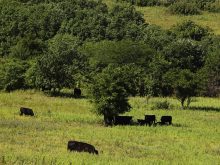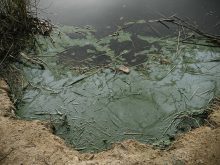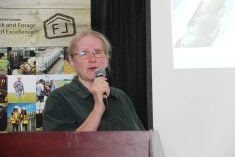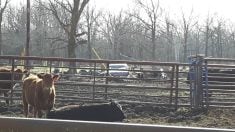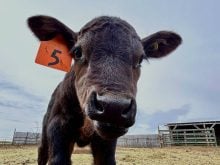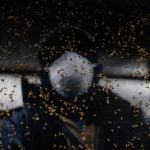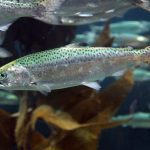Hopefully, infectious diseases don’t appear in Canada but the industry needs to have a plan in place
If there ever is a foreign animal disease outbreak in Canada, we all know it could be devastating to the industry.
Contagious pathogens such as foot and mouth in bovines, sheep and swine, or African Swine Fever (ASF) in pigs, can cost individual producers in lost production and animal deaths, as well as closing the borders to all exports.
The older farming generation might remember the British 2001 foot and mouth disease outbreak that required the destruction of more than six million animals to control the disease.
Read Also

Cancer agency reclassifies another herbicide ‘probably carcinogenic’
The WHO’s cancer research agency has now put atrazine, a herbicide well known to corn growers, in the same potential-hazard category where the agency put glyphosate.
In Canada, AHEM (Animal Health Emergency Management Project) is an organization created to meet with the different production-animal groups and provide advice on how the Canadian industry can be better prepared in the event of a foreign animal disease outbreak. To read more about the four-year initiative that runs until 2023, visit https://animalhealth.ca.
If you run across AHEM information please take it seriously. This work could potentially benefit us all immensely. The COVID-19 pandemic has made us appreciate how quickly a contagious disease can spread through a population.
African Swine Fever would do the same with a tremendous mortality rate in the hog industry.
The AHEM group has already developed a producer handbook as well as a fact sheet on what to do if, for example, your herd was quarantined. It’s very good information to use if ever needed — get the producer handbook and give it a read.
Look after each other
It’s about neighbours and veterinarians looking after each other for the common good. Foot and mouth disease would involve most farm animal species, so the various producer groups would need to work together.
I believe COVID has helped to some extent by showing how we can live and work within a proverbial bubble. In the event of an animal disease outbreak, the biosecurity practices would need to get ramped up and livestock movement stopped immediately until the situation is contained.
We have already seen this in limited ways with the highly pathogenic Avian Influenza recently detected in Canada. In this case, the Canadian Food Inspection Agency (CFIA) takes over quarantines to stop the spread and depopulates the affected flocks.
Control measures are generally applied in the large poultry-producing areas where strict biosecurity is practised and all birds are inside raised. What complicates control measures is the farm flocks that are raised outside. Outdoor poultry flocks can be infected by migration of wild birds.
The AHEM group does not have an easy task in controlling disease spread once wildlife become involved and infected. For example, feral wild boar populations running loose across North America have become a real risk of spreading both foot and mouth as well as African Swine Fever.
That is why “Squeal on Pigs,” an initiative by the Alberta Invasive Species Council, looks at spotting, documenting and getting trained people to depopulate the wild pig sounders (colonies). Controlling these wild boar populations is needed for several reasons. They do tremendous damage to crops and the environment plus they could be a transmitter of ASF and/or foot and mouth disease if it ever got into the country.
Keeping current on protocols and disease-prevention measures gives everyone several extra jobs. As a producer, I also realize how necessary it is if we want to help prevent reportable foreign animal diseases or some other emerging disease.
Again, as we learned from COVID-19, we would now be much quicker to react if some disease outbreak was reported. Plus we saw how the control measures including vaccination helped. We also learned that as soon as there is non-compliance or a loosening of the rules a new wave of the disease can occur. The same COVID rules and guidelines can be applied to farm animal biosecurity generally.
Please look up AHEM and read the producer handbook. There is good information on “Squeal on Pigs” as well as information on all the invasive animals, weeds and water species that need to be monitored.
It is all excellent resource material with the ultimate goal of protecting the primary agricultural producer. Producers always need to be diligent in reporting something unusual in animal health and behaviour. There may be false alarms but that is how we learn.
It is also important that CFIA authorities continue to be very strict at border crossings with the importation of meat or meat byproducts, as that’s how diseases could come into Canada. That’s exactly how the one and only case of foot and mouth disease in the 1950s arrived in Saskatchewan. We all can learn from the past.



